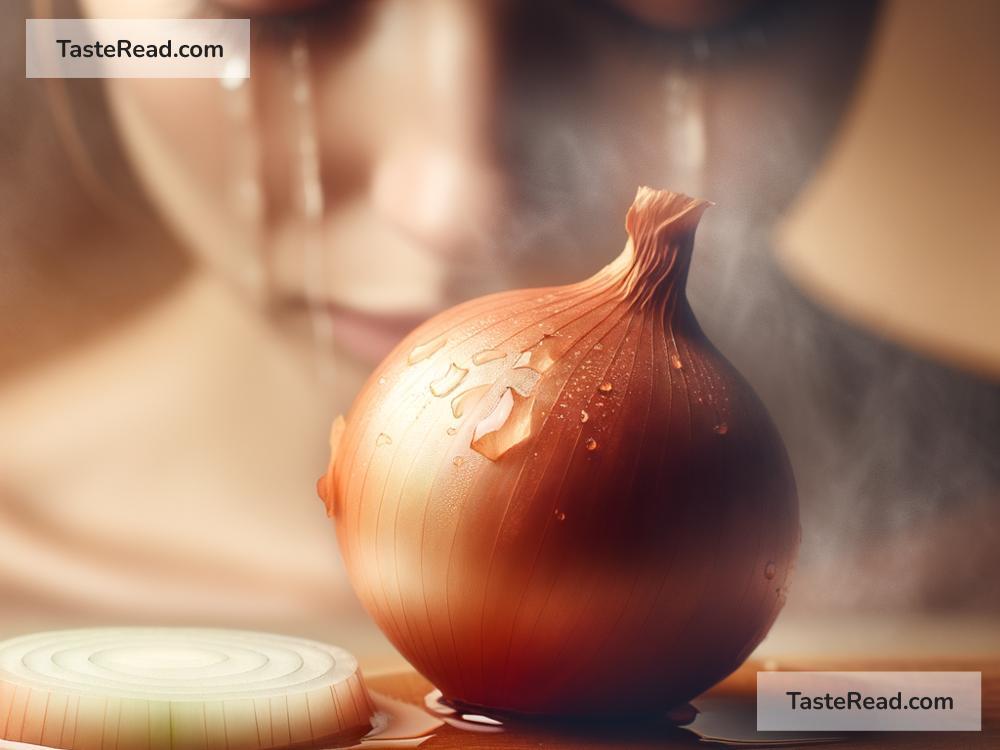Why Do Onions Make You Cry? The Fascinating Chemistry Behind It
Onions are a staple in kitchens around the world. Whether you’re cooking a flavorful curry, a hearty stew, or even preparing a fresh salad, onions find their way into most dishes. But if you’ve ever chopped an onion, you’ve likely experienced its teary side effect. Have you ever stopped to wonder: why do onions make us cry? The answer lies in their fascinating chemistry.
What’s Inside an Onion?
An onion might seem like a simple fruit (yes, it’s technically a fruit!), but it’s actually packed full of unique compounds. A freshly harvested onion is made up of layers of cells that hold nutrients, water, and special chemical compounds. These compounds help protect the onion from predators in nature, such as bugs or animals that might try to eat it raw. Interestingly, these protective chemicals are also the reason onions make us cry.
Among the chemicals inside an onion are sulfur-based compounds. Sulfur is the key ingredient that contributes to the crying effect. Onions absorb sulfur from the soil they grow in, and they use it to create powerful molecules that are harmless when the onion is whole. However, things change when you start cutting them.
The Crying Begins: What Happens When You Cut an Onion?
When you slice into an onion, you’re not just chopping through its layers—you’re also breaking open tiny onion cells. Inside these cells are two key players in the tears game: sulfur compounds and enzymes. Enzymes are proteins that help make chemical reactions happen. They basically “unlock” the onion’s hidden chemistry.
When the enzymes mix with the sulfur compounds, they trigger a reaction that forms new chemical substances. One of these is called propanethial-S-oxide (it’s a mouthful, we know, but let’s call it PSO for short). PSO is a volatile compound, meaning it easily turns into a gas and floats into the air. This gas travels upward, straight toward your face as you chop away.
PSO Meets Your Eyes
Here’s where the crying happens. When the PSO gas reaches your eyes, it reacts with the water in your tears. The result? A mild form of sulfuric acid is created. Now, don’t panic! It’s nowhere near strong enough to harm you, but it’s just potent enough to irritate your sensitive eyes.
Your body, being the amazing machine that it is, steps in to defend itself. The irritation signals your tear glands to produce more tears to flush out the acid and protect your eyes. This is why chopping onions can leave you blinking furiously and wiping away tear streaks.
In short: onions don’t “make” you cry; they irritate your eyes, and your body responds by crying to protect itself.
Why Do Some Onions Make You Cry More Than Others?
If you’ve ever cooked with different types of onions, you might have noticed that some onions make you cry more than others. It turns out, not all onions are created equal when it comes to their sulfur chemistry. Here’s why:
- Type of Onion: Stronger onions like white, yellow, or red onions tend to have higher levels of sulfur compounds, which produce more PSO. On the other hand, sweeter onions, such as Vidalia onions, contain less sulfur, so they’re gentler on the eyes.
- Freshness: Fresh onions often have more enzymes and sulfur compounds ready to react. Over time, onions can lose some of their potency, meaning older onions might not make you cry as much.
- Growing Environment: Onions grown in sulfur-rich soil will absorb more sulfur, making their chemical reactions stronger.
Can You Stop the Tears?
Luckily, there are a few tricks that can help you chop onions without constantly reaching for a tissue.
- Chill Before Cutting: Place your onion in the fridge for about an hour before cutting it. Cold slows down the chemical reactions, meaning less PSO gas is released while you chop.
- Cut Under Water: Some people peel or slice onions while they’re submerged in water. The water catches the PSO gas before it can reach your eyes.
- Use a Sharp Knife: A sharp knife minimizes the damage to the onion cells. With fewer broken cells, less PSO is produced.
- Ventilation: Chop onions near a fan or open window so the gas disperses instead of heading straight toward your eyes.
Fun Fact: Scientists Are Working on Tear-Free Onions!
Researchers have been experimenting with onions to create varieties that don’t produce as much PSO. In fact, there’s already a type of onion called the “Sunion,” bred specifically to be tear-free. If chopping onions brings you to tears, you might want to keep an eye out for these specialized onions at your local grocery store.
The Science Behind Everyday Life
It’s amazing how something as simple as chopping an onion can teach us so much about chemistry and biology. Onions make us cry because they’ve evolved clever defenses to ward off predators. But these same compounds also give onions their bold, delicious flavor, making them essential in countless dishes.
So, the next time you find yourself wiping away onion-induced tears, take a moment to appreciate the incredible science behind the humble onion. It’s just another reminder of how fascinating the natural world can be—even in the kitchen!


